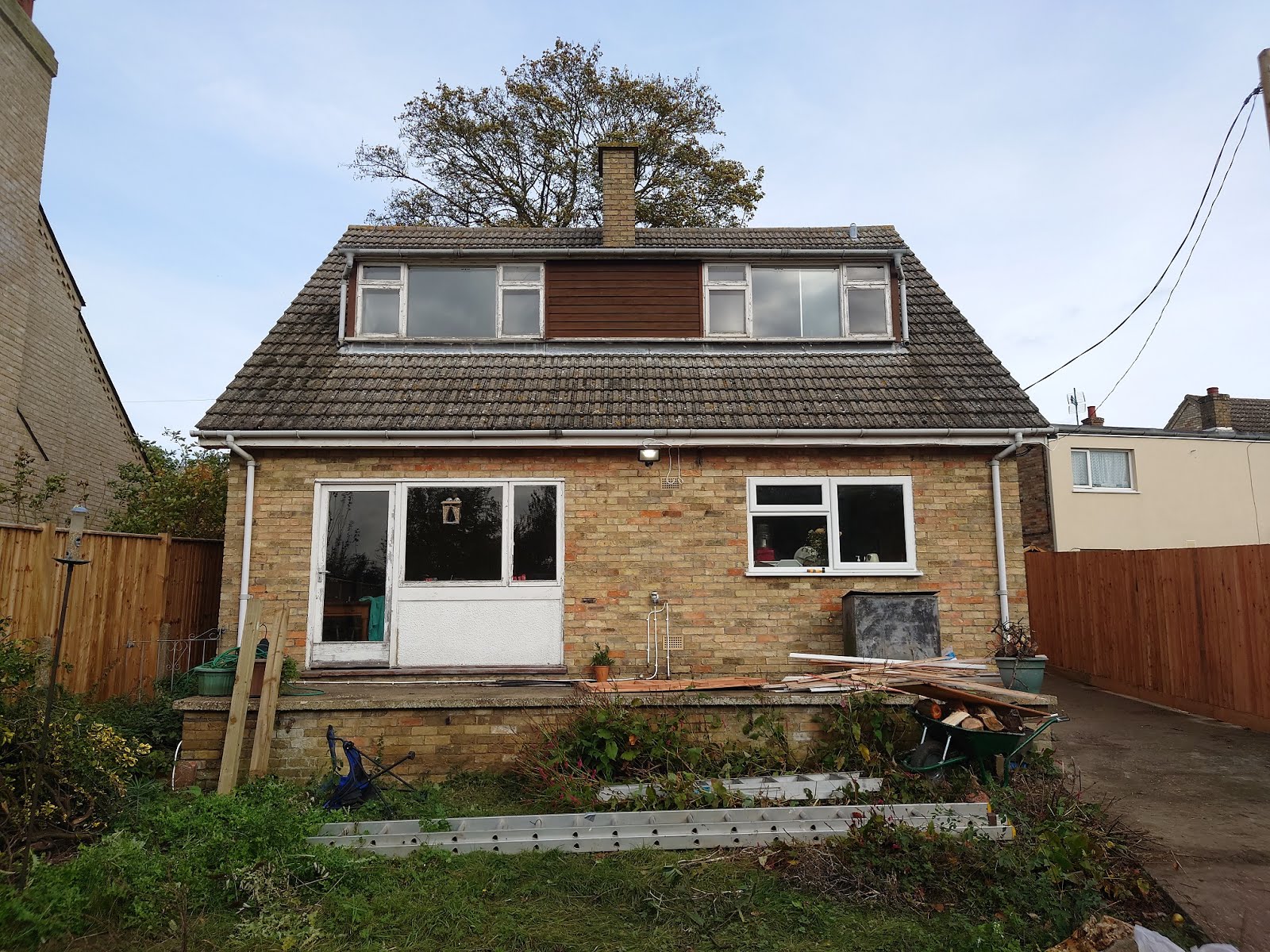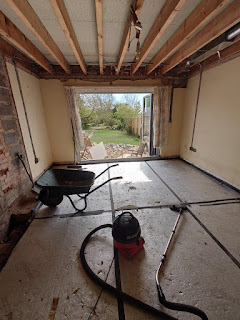Insulation
I will be so pleased to see the back of the damp, moudly, mouse-poo strewn fibre glass insulation. I bagged up the last of the stuff and took to the recycling unit. Sadly I do not think it is recyclable. We have been thinking about sustainability as we go along the renovation project. I thought insulation would be a problem area for sustainability. Are we going to have to make some "green trade-offs"?
We opted for 150mm Quinn Therm PIR boards on the new roof between the joists and a further 25mm sheet over the joists. And on the old roof which has a non breathable membrane and up to now zero ventilation (hence the damp, moudly fibreglass), we have put 50mm with a gap behind for air to circulate, and 100mm over the joists. We will also add ventilation holes in the gable ends and in the soffits. And we are going to tape the outermost sheet of PIR with airtightness tape.
"PIR (polyisocyanurate) insulation is a popular insulation board commonly used on homes across the country. PIR is derived from petrochemical substances, so in terms of environmentally friendliness is not a very highly regarded material. The production process produces emissions to air and water as well as hazardous wastes, so again contributes to our planets global warming problem. Furthermore, it is important to note that if this material is to catch fire, a considerably higher level of toxic gases are produced compared to those of other insulation materials. In particular, hydrogen cyanide is a significant contributor to the fire toxicity of PIR. It’s been proven and observed by scientists that most fire related deaths resulted from toxic product inhalation, proving the real danger this product can pose to human health and the environment." (http://urbane-eco.co.uk/site/the-environmental-impact-of-insulating-our-homes/).
But I am also aware that insulation products are always contributing to energy efficiency and thus indirectly help us save our mother nature. "The equation is pretty simple – a well insulated home leads to less use of our heat and cooling devices which again leads to less CO2 emissions and a much cleaner and better preserved environment. This is why it is important to understand that some products may not be as eco-friendly, but are highly efficient when it comes to their thermal performance so the negative environmental impact is often compensated with high energy efficiency."
This site shows you the environmental considerations of different types of insulation: https://www.insulationshop.co/home_insulation_environmental_impact
Even sheep's wool has some negative environmental considerations.
This article gives a good table showing performance verses cost of various materials: https://www.building.co.uk/data/sustainability-thermal-insulation/3075146.article
But reading up on Quinn Therm (now called Mannok) it doesn't sound as bad as I had expected: Quinn Therm has an ozone depletion potential (ODP) of zero. It has a low Global Warming Potential (GWP), certified to ISO 14001 - Environmental Management Systems. All Quinn Therm products, with the exception of QRFR-GFR and QRFR-DPFR, achieve A+ rating when compared to the BRE Green Guide. QRFR-GFR and QRFR-DPFR achieve A rating. So its not classed as hazardous waste when the times comes to recycle it at the end of the building's life.
We are also looking to use Spacetherm Aerogel made by Proctors on the window reveals, an ultra thin, ultra low thermal conductivity, ultra expensive!
https://www.proctorgroup.com/products/spacetherm
Note: The thicker 150mm PIR board is notoriously hard to cut. We made a clamp our of plyboard to make this process a bit easier. We have named it the Quinn Therm Cutter 2020:







Comments
Post a Comment